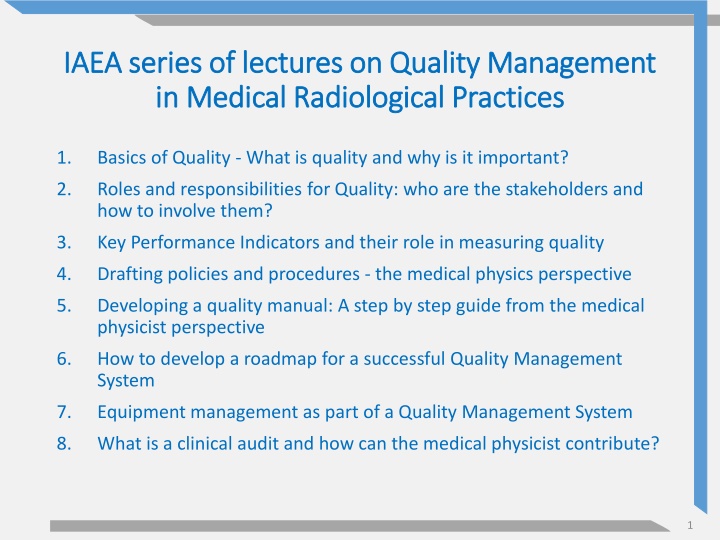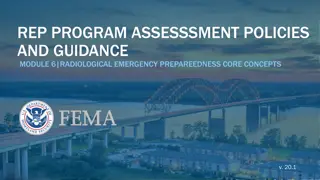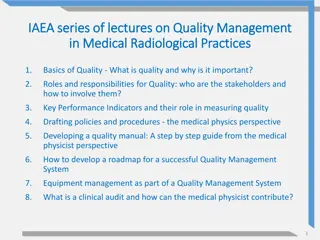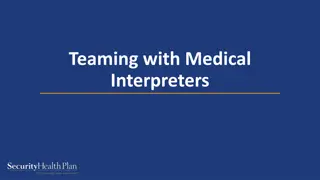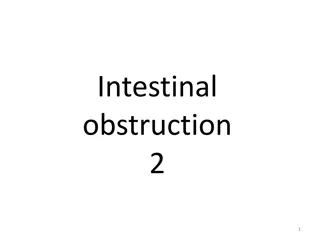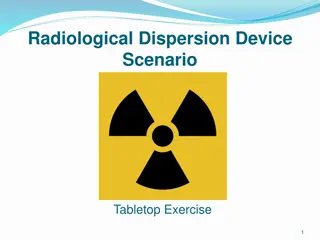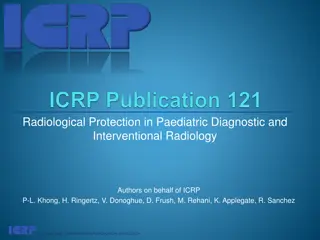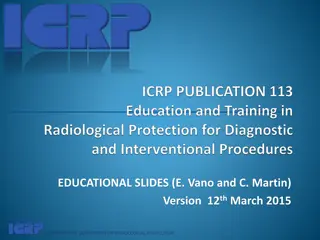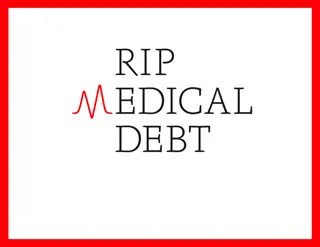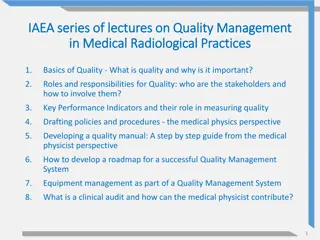Comprehensive Insights into Quality Management in Medical Radiological Practices
Explore a series of lectures by the IAEA focusing on quality management in medical radiological practices, covering essential topics such as the basics of quality, key performance indicators, drafting policies, equipment management, and more. Gain a thorough understanding of KPIs, their significance in healthcare quality, and how they can drive improvements in radiation protection programs.
Download Presentation

Please find below an Image/Link to download the presentation.
The content on the website is provided AS IS for your information and personal use only. It may not be sold, licensed, or shared on other websites without obtaining consent from the author.If you encounter any issues during the download, it is possible that the publisher has removed the file from their server.
You are allowed to download the files provided on this website for personal or commercial use, subject to the condition that they are used lawfully. All files are the property of their respective owners.
The content on the website is provided AS IS for your information and personal use only. It may not be sold, licensed, or shared on other websites without obtaining consent from the author.
E N D
Presentation Transcript
IAEA series of lectures on Quality Management IAEA series of lectures on Quality Management in Medical Radiological Practices in Medical Radiological Practices 1. Basics of Quality - What is quality and why is it important? 2. Roles and responsibilities for Quality: who are the stakeholders and how to involve them? 3. Key Performance Indicators and their role in measuring quality 4. Drafting policies and procedures - the medical physics perspective 5. Developing a quality manual: A step by step guide from the medical physicist perspective 6. How to develop a roadmap for a successful Quality Management System 7. Equipment management as part of a Quality Management System 8. What is a clinical audit and how can the medical physicist contribute? 1
Key Performance Indicators and their role in measuring quality Quality Management in Medical Radiological Practices (Diagnostic Radiology, Nuclear Medicine and Radiotherapy) 2
Objectives The objectives of this presentation are to: understand what Key Performance Indicators are learn about their role in measuring quality comprehend who they can be used to track performance within the imaging and therapy hospital departments.
Content What are key performance indicators (KPIs) and what strategies can be used to adopt them successfully? How can KPIs be linked to healthcare quality and safety targets? How can we use KPIs to characterize a radiation protection program? How can KPI results be communicated effectively? 4
You cant manage what you can t measure. Peter Drucker 5
What are KPIs? Key performance indicators (KPIs) are measurable parameters or quantities that can assess the degree to which an organization or process meets agreed needs, requirements and targets. KPIs are quantifiable metrics of both performance and progress towards a specific goal. 6
KPIs in healthcare A key performance indicator (KPI) is a measurement tool used to monitor and evaluate the quality of important governance, management, clinical, and support functions In a healthcare quality management system, KPIs can be used to monitor the performance of the service against sets of targets, objectives and standards related to quality and safety. Joint Commission on Accreditation of Healthcare Organizations. Primer on Indicator Development and Application: Measuring Quality in Health Care. 1990 7
Defining KPIs KPIs must be defined so that they are: Specific: KPIs should be clearly defined, consistent, reproducible and stable; Measurable: Data for KPIs should be available and easy to capture; Attainable: KPI targets should be reachable within the context of the healthcare service; Relevant: KPIs should be relevant and have an impact on the service, both on patients and staff. Time-bound: Data should be captured continuously but analysed over set time periods that result in statistically meaningful results. 8
Defining KPIs Specific What is measured? How is it measured? Who is responsible for measuring it? S Measurable Is the outcome quantitative (numbers) or qualitative (descriptors). What are the units? M Attainable Can it be measured? What are the resources required? What are the obstacles? A Relevant Will the results be useful to make decisions and drive change? R Time-bound By when will we collect data? How frequently will we be updating thereafter? T 9
KPIs and quality targets Within the context of a quality management system, KPIs can be aligned with the six quality targets of healthcare services: Effectiveness; Efficiency; Accessibility; acceptability/patient-centred; Equity; Safety; World Health Organization. (2006). Quality of care : a process for making strategic choices in health systems. World Health Organization. 10
KPIs and effectiveness KPIs can measure whether evidence-based practice and scientific knowledge is used to decide on appropriate clinical pathways. arrow decision outline by Material Design Icons is licensed under Apache Licence 2.0 11
KPIs and effectiveness: Examples Examples of effectiveness-related KPIs: Audit of appropriateness of examinations and therapies based on clinical guidelines and patient clinical history; Peer-review agreement rate on image interpretation by radiology clinicians. Tasks App by Fluent UI System Icons is licensed under MIT License 12
Pause and Ponder How confident are you that all the exams/therapies at your medical radiological practice are justified using the same evidence-based professional guidelines? 13
KPIs and efficiency KPIs can measure whether resources are used at maximum capacity, avoiding waste. Resources may be: Time; Money; Human capital; Equipment/supplies; Energy; Ideas. recycle by Carbon Icons is licensed under Apache Licence 2.0 14
KPIs and efficiency: Examples Examples of efficiency-related KPIs: Percentage of hours equipment is unavailable because of unscheduled downtime. Percentage of hours equipment is available but not utilized. Number of reports generated per full time medical radiological physician. Number of examinations or therapies performed per full time technologist. imaging alternative ct by Medical Icon Set is licensed under MIT License imaging alternative pet by Medical Icon Set is licensed under MIT License 15
Pause and Ponder What evidence could you provide to your finance department showing that an ageing piece of equipment keeps breaking down resulting in delays to the treatment or examination of patients? 16
KPIs and accessibility KPIs can measure the waits and delays for those who receive and provide healthcare. Delays may be due to distance from the healthcare facility but are also likely to be endemic in the workings of the healthcare service. timer by OpenMoji Emoji Set is licensed under CC BY 4.0 ambulance by BoxIcons Set is licensed under CC BY 4.0 Tablets by Font Awesome Icons is licensed under CC BY 4.0 17
KPIs and accessibility: Examples Examples of accessibility-related KPIs: Patient waiting time for examination or therapy; Radiological report turnaround times; Time to next available appointment; Time for reporting of critical findings in a radiological exam. waiting area by Medical Icon Set is licensed under MIT License 18
Pause and Ponder Would accessibility KPIs differ depending on the urgency of referral orders? E.g. how may radiological report turnaround times differ between urgent inpatient vs non-urgent outpatient exam orders? 19
KPIs and acceptability KPIs can measure if the healthcare service is patient-centred, meeting the patients needs and expectations. Examples of acceptability-related KPIs: Patient satisfaction surveys; Analysis of patient feedback and complaints; Percentage of available appointments for therapy or exam over a set period of time (e.g. 1 month). family practice by Medical Icon Set is licensed under MIT License 20
KPIs and equity KPIs can measure if there is equity of access to the healthcare service. Equity-related KPIs are relevant to broader-scale evaluation of a healthcare service, for example: Uptake of national breast screening program by different ethnic minorities; Access to radiotherapy cancer treatment for different socio- economic groups. balance scale by OpenMoji Emoji Set is licensed under CC BY 4.0 21
KPIs and safety KPIs can measure if the healthcare service is safe for staff, patients and visitors. Warning alt filled by Carbon Icons is licensed under Apache Licence 2.0 22
KPIs and safety: Examples Examples of safety-related KPIs: Number of patient falls; Percentage of extravasations in nuclear medicine examinations; Number of unintended and accidental radiation exposures of patients; Number of radioactive spills. fall by Tabler icons is licensed under MIT License leak by game Icons is licensed under CC BY 3.0 23
Pause and Ponder You have witnessed a patient falling in your department. How would you know that this was only a once-off incident, and it didn t happen earlier that day at the same location and for the same reasons? 24
Multi-dimensional KPIs Each KPI may cover a number of different quality targets. For example, by measuring the appointment delay from scheduled examination time to start of examination, we evaluate: Efficiency: Delays result in time overrun which can also lead to increased cost if, for instance, staff need to be paid overtime; Accessibility: Delays make the service less accessible to patients; Acceptability: Delays deteriorate the patient experience. 25
Determining your KPI target value KPIs can be assigned a target value, which can be a number or a percentage. The target value may be dictated by: Regulatory authorities; Professional or accreditation bodies; Government or private funding e.g. health insurance companies; Requirements from research studies; Peer sites. By comparing measured to target KPI values, the medical radiological service can determine its performance and decide on improvement plans. direct hit by OpenMoji Emoji Set is licensed under CC BY 4.0 26
KPIs and radiation protection KPIs can be used to monitor the performance and improvements of radiation safety programs towards meeting the goals of the Bonn Call for Action. KPIs for radiation protection relate primarily to the healthcare quality target of safety. KPI targets for radiation protection may be dictated by regulatory or accreditation requirements. 27
KPIs and radiation protection Radiation protection KPIs can be applied on a national, regional or local level and can relate to each of the three quality domains: Structure; Process; Outcomes. hospital by Health Icons is licensed under MIT License process by Unicorns Icon Set is licensed under Apache Licence 2.0 Heart Pulse by Fluent UI System Icons is licensed under MIT License Donabedian, A. Explorations in Quality Assessment and Monitoring, Volume 1: The Definition of Quality and Approaches to Its Assessment. Ann Arbor, Michigan: Health Administration Press. 1980. 28
Structure KPIs in radiation protection Structure KPIs can describe the capacity of the radiation protection framework to fulfil its goal. The targets of structure KPIs can be very high as they are likely to relate to basic controls of radiation risks determined by regulatory requirements. Structure KPIs may relate to: Radiation emitting equipment or sources; Personal protective equipment; Personnel/staffing; Facility/ engineering controls. 29
Structure KPIs in radiation protection: Examples Examples of structure KPIs that can be used to monitor radiation protection: Percentage of radiation workers with completed radiation safety induction / training; Percentage of radiation workers provided with radiation monitoring; Percentage of radiation emitting equipment and PPE that has had scheduled quality control undertaken within prescribed time; Percentage of dose measurement equipment with certified calibration; Ratio of radiation workers to PPE available; Ratio of radiation emitting equipment to licensed radiation safety officers or qualified medical physicists. 30
Pause and Ponder How would structure radiation protection KPIs differ in different controlled areas of medical radiological practices? E.g. what would be the ratio of radiation workers to PPE available in Nuclear Medicine vs General Radiology? Would the difference be justified? 31
Process KPIs in radiation protection Process KPIs can monitor the actions undertaken to maintain and improve the radiation protection framework in place. Process KPIs are likely to be metrics of compliance with radiation protection policies, procedures and guidelines. Process KPIs relate to different stages of patient and staff exposure to radiation: Pre-exposure; During exposure; Following exposure. 32
Process KPIs in radiation protection: Examples Examples of process KPIs that can be used to monitor radiation protection: Percentage of examinations complying with referral/appropriateness criteria; Frequency with which wrong patients or anatomies are exposed in an imaging study; Frequency with which radiation therapy treatment errors occur; Frequency of examinations repeated because of inadequate or incomplete examinations; Percentage of examinations exceeding facility or national dose reference levels; Percentage of radiation workers wearing personal radiation meters or appropriate PPE in controlled areas. 33
Pause and Ponder How is it possible to verify that staff comply with the radiation safety policy/manual and wear their personal radiation meters unless you audit them? 34
Outcome KPIs in radiation protection Outcome KPIs can monitor the impact of the radiation protection framework on the health status of individuals, including staff and patients. Examples of outcome KPIs in radiation protection: Percentage of radiation workers whose dosimetry records exceed personal exposure limit or with doses higher than expected; Frequency of radiation safety incidents resulting in effective doses above regulatory notification limits; Percentage of patients and staff happy with radiation safety measures in place. 35
KPIs and benchmarking KPIs can also provide peer statistics and allow comparison of different radiation safety frameworks in a neutral and unbiased manner. Benchmarking a radiation safety program against peers can help: Understand relative strengths and deficiencies; Recognize efforts of facilities who proactively invest in quality and safety; Justify and empower management decisions on staffing, education, innovation, technology investment and process change; Respond to requests for accountability and transparency. 36
Just because you can measure everything doesn t mean that you should. Edwards Deming 37
Choice of KPIs Although many KPIs can be defined for a service, it can be difficult to implement and monitor all of them. Each facility should decide which KPIs are important, relevant and can be reasonably adopted. KPIs can be replaced by others once their targeted value has been achieved or exceeded over a prescribed period of time. Results from process KPI are likely to improve initially in response to the knowledge of being monitored. In this case, compliance should be maintained over a sufficiently long period of time. The increasing availability of electronic data collection can ease the implementation of KPIs. 38
The role of informatics: Example 1 Electronic dose management systems can automate the collection of patient dosimetry data. Patient dosimetry statistics can then be automatically calculated and compared to facility or national dose reference levels. Alerts can be set up notifying users when patient exposure exceeds dose constraints. Although the data collection is simplified, data would still need to be checked on a regular basis and cleaned of any incorrect entries. High bars by Health Icons is licensed under MIT License 39
The role of informatics: Example 2 Clinical decision support tools can assist ordering physicians with choosing the most appropriate examination. In doing so, they can also monitor deviations from referral criteria. Instances of non-compliance would need to be further investigated as non-standard patient management may be indicated for a specific patient cohort or a particular patient. Information technology systems can assist the collection of data for KPIs, but there is still a need for clinical and technical expertise and judgement to validate them. 40
KPIs and audience In communicating KPI results, it is important to take into consideration the audience and type of impact intended. In all cases, communication should be clear, precise and succinct. presentation by Carbon Icons is licensed under Apache Licence 2.0 41
KPIs and audience For example, when presenting KPIs related to personal dosimetry, results may need to have a different emphasis for: Radiation workers who may want reassurance about their exposure to radiation; Radiation safety committee who may want to identify trends; Management who may want to know about the impact of workflow changes on radiation exposure; Licensing inspectors who will want to ensure that occupational doses are well below regulatory limits. 42
Visualization of KPIs Visualizing KPI results can be an efficient and effective way to communicate findings. When preparing graphs and visual aids, it is important to consider the time available for the audience to read and interpret KPI results. Large data sets should be displayed in clear and coherent graphs. Emphasis should be on variation of data rather than variation of display design. The audience should be visually encouraged to compare data to appropriate benchmarks or identify trends. 43
KPI dashboard example (See previous slide for more explanation) Target value 91 KPI Unit Q1-2020 Q2-2020 Q3-2020 Q4-2020 % patients identified correctly % urgent reports within turnaround target % inpatient reports within turnaround target % outpatient reports within turnaround target % hand hygiene compliance % critical results communicated within 30 minutes % staff wearing personal dose badges % equipment tested within scheduled QC timeframe % image reject rate % 85.1 87.5 92.3 95.8 97 % 95.3 98.4 96.5 97.5 91 % 92.5 91.6 89.5 92.4 91 % 85.6 80.4 78.5 82.8 91 % 83.6 84.5 91.3 93.7 95 % 94.3 96.5 95.5 97.8 91 % 92.4 89.5 93.4 92.5 91 % 95.7 94.7 96.7 97.2 7 % 6 5 8 6 44
Summary KPIs are important components of a quality and safety management system for a healthcare service. KPIs can be used to track the performance of the use of radiation for imaging and therapy, as well as in the radiation protection framework for staff and patients. Care needs to be taken when developing KPIs and when presenting their results so as to ensure that their impact is maximized. 45
Resources and references Improving Value in Health Care. Measuring Quality. OECD Health Policy Series. 2011 Guidance on Developing Key Performance Indicators and Minimum Data Sets to Monitor Healthcare Quality. Health Information and Quality Authority. Ireland. 2013. Performance indicators for radiation protection management: suggestions from the European Society of Radiology. ESR. Insights Imaging. 2020 Dec 9;11(1):134. Quality metrics currently used in academic radiology departments: results of the QUALMET survey. Eric A Walker et al. Br J Radiol. 2017 Mar;90(1071):20160827. 46
Resources and references World Health Organization. (2006). Quality of care : a process for making strategic choices in health systems. World Health Organization. INTERNATIONAL ATOMIC ENERGY AGENCY and World Health Organization. Bonn Call for Action. 10 actions to improve Radiation Protection in Medicine in the Next Decade. 2014 Joint Commission on Accreditation of Healthcare Organizations. Primer on Indicator Development and Application: Measuring Quality in Health Care. 1990 Donabedian, A. Explorations in Quality Assessment and Monitoring, Volume 1: The Definition of Quality and Approaches to Its Assessment. Ann Arbor, Michigan: Health Administration Press. 1980. 47
Resources and references Dunnick NR, Applegate KE et al. Quality-a radiology imperative: report of the 2006 Intersociety Conference. J Am Coll Radiol. 2007 Mar;4(3):156-61. Abujudeh HH, Kaewlai R et al. Quality initiatives: Key performance indicators for measuring and improving radiology department performance. Radiographics. 2010 May;30(3):571-80 Schultz CC, Shaffer S et al. Key Performance Indicators in the Evaluation of the Quality of Radiation Safety Programs. Health Phys. 2016 Aug;111(2 Suppl 2):S155-65 Albert JM and Das P. Quality indicators in radiation oncology. Int J Radiat Oncol Biol Phys. 2013 Mar 15;85(4):904-11. 48
